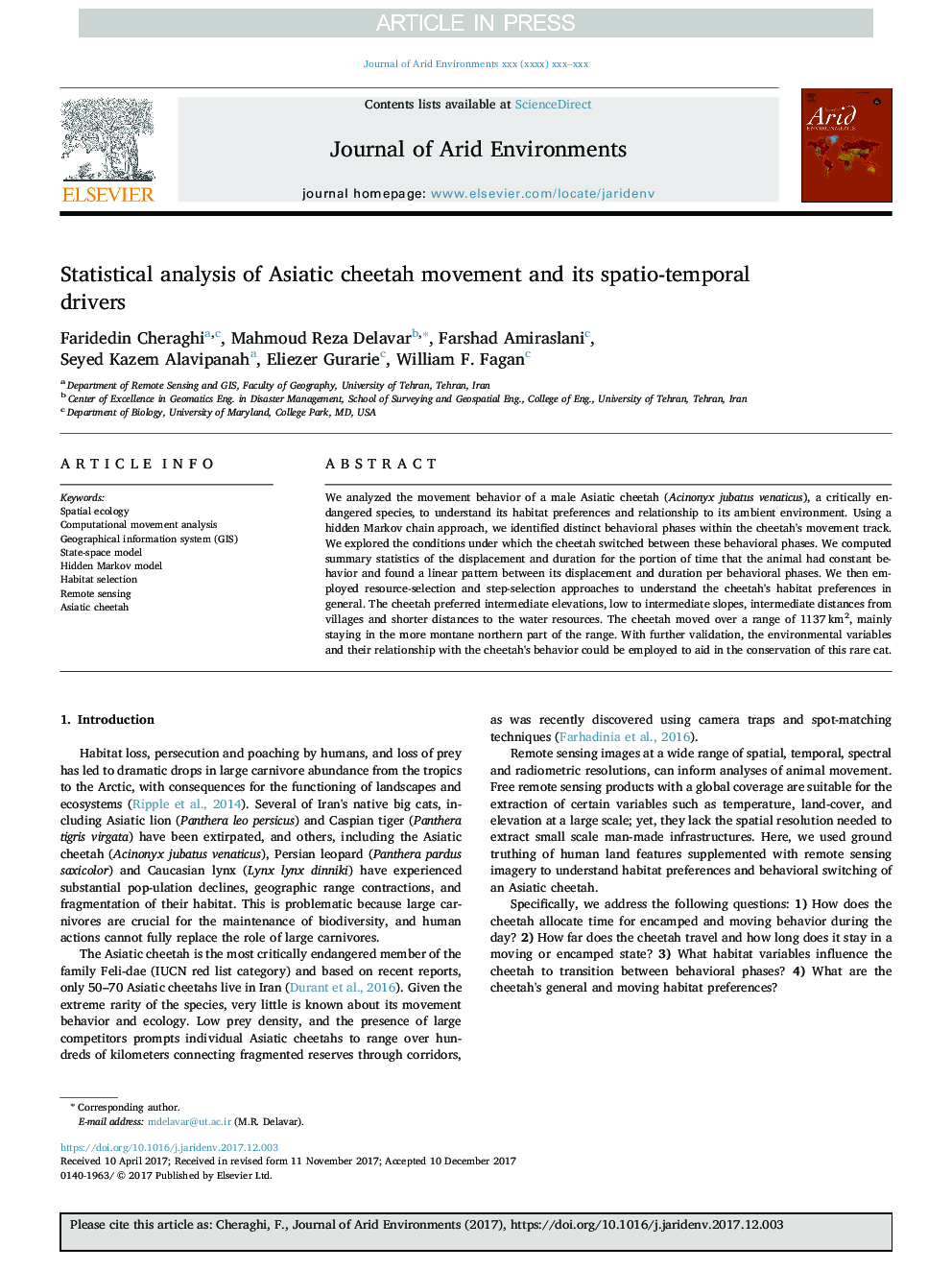| Article ID | Journal | Published Year | Pages | File Type |
|---|---|---|---|---|
| 8848557 | Journal of Arid Environments | 2018 | 5 Pages |
Abstract
We analyzed the movement behavior of a male Asiatic cheetah (Acinonyx jubatus venaticus), a critically endangered species, to understand its habitat preferences and relationship to its ambient environment. Using a hidden Markov chain approach, we identified distinct behavioral phases within the cheetah's movement track. We explored the conditions under which the cheetah switched between these behavioral phases. We computed summary statistics of the displacement and duration for the portion of time that the animal had constant behavior and found a linear pattern between its displacement and duration per behavioral phases. We then employed resource-selection and step-selection approaches to understand the cheetah's habitat preferences in general. The cheetah preferred intermediate elevations, low to intermediate slopes, intermediate distances from villages and shorter distances to the water resources. The cheetah moved over a range of 1137â¯km2, mainly staying in the more montane northern part of the range. With further validation, the environmental variables and their relationship with the cheetah's behavior could be employed to aid in the conservation of this rare cat.
Keywords
Related Topics
Physical Sciences and Engineering
Earth and Planetary Sciences
Earth-Surface Processes
Authors
Faridedin Cheraghi, Mahmoud Reza Delavar, Farshad Amiraslani, Seyed Kazem Alavipanah, Eliezer Gurarie, William F. Fagan,
